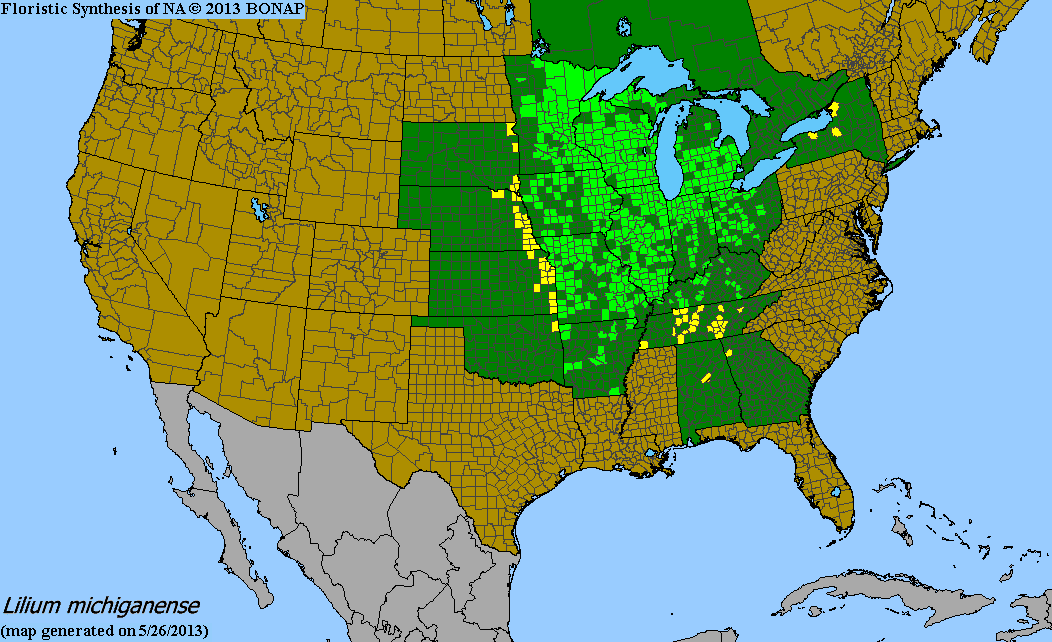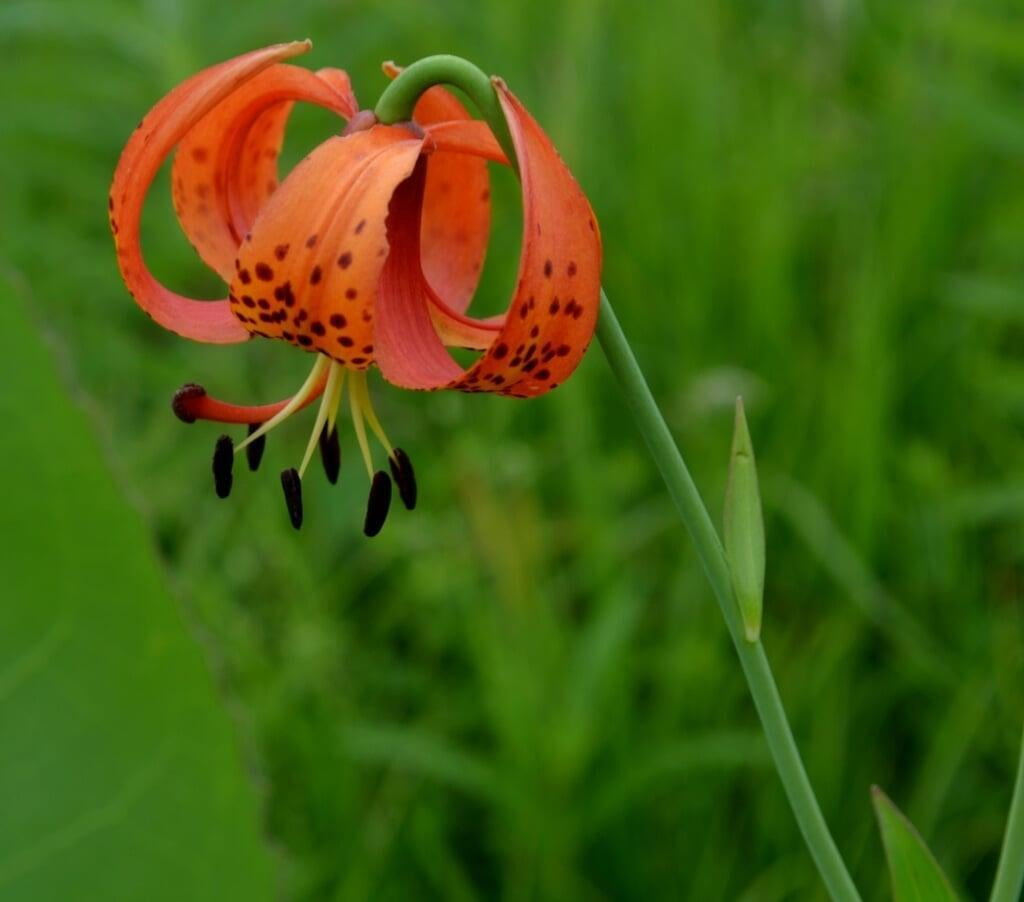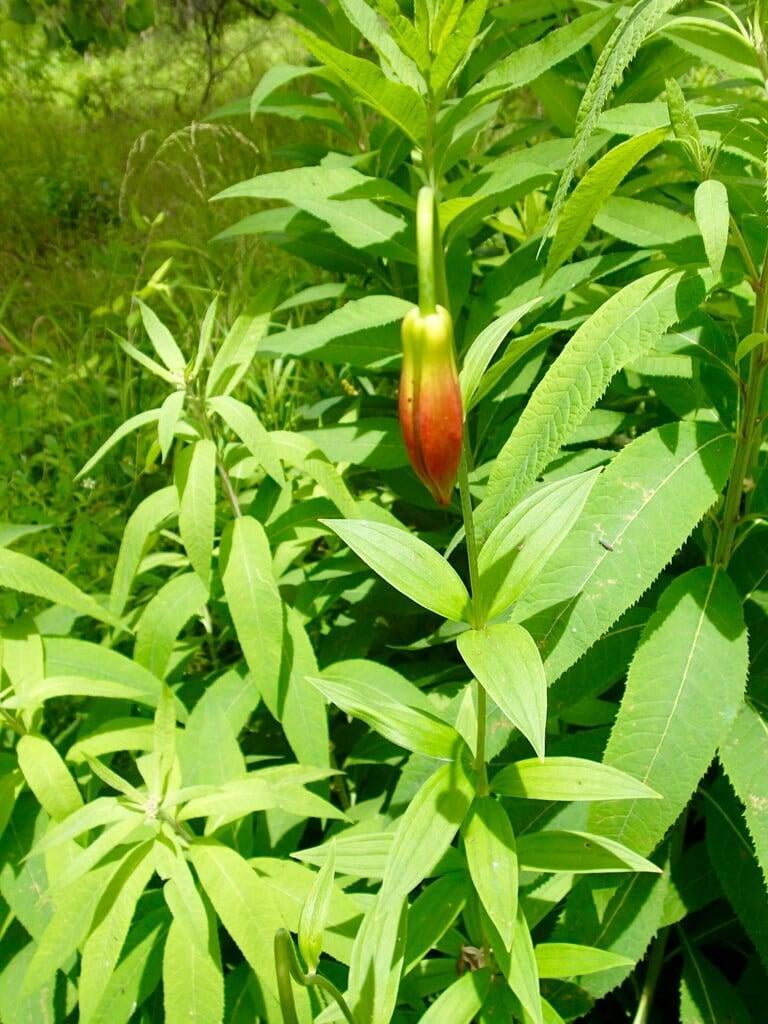Lilium michiganense
Michigan lily Description:
Lilium michiganense, commonly known as the Michigan lily, is a perennial flowering plant that is native to North America. This lily is a member of the Liliaceae family and is closely related to other lily species like the Turk's cap lily (Lilium superbum) and the orange lily (Lilium bulbiferum michiganense).
The Michigan lily can reach heights of up to 6 feet and produces a showy, trumpet-shaped flower that is typically bright orange in color. Each flower can measure up to 15 cm (6 inches) in diameter and features six tepals that curl back to reveal prominent stamens and a pistil. The flowers are fragrant and attract a variety of pollinators, including bees, butterflies, and hummingbirds.
The Michigan lily is typically found in woodland areas, meadows, and prairies, and requires well-draining soils with a neutral to slightly acidic pH. This plant is known for its hardiness and can tolerate a wide range of environmental conditions. However, the Michigan lily is also an endangered species, and efforts are being made to conserve and protect its habitat.
In addition to its ornamental value, the Michigan lily has a long history of medicinal use by Native American tribes. The plant's roots were used to treat a variety of ailments, including digestive issues and skin irritations. Today, the Michigan lily is also used in gardening and landscaping, where it adds a splash of color and a touch of wildness to any outdoor space.
Native Range:
Michigan lily is found natively growing in mostly the Midwestern region of the United States.
Standard Plant Information:
Plant Height: 3' - 6'
Bloom Time: June - August
Preferred Habitat: Does well in part shade to full sun. Often found in moist fields, bogs, shorelines, and woodland edges.
Sowing:
For most homeowners, the best option is to scatter seed on the ground by hand broadcasting at a minimum of 16-64 pls ounces per acre. For even coverage, we recommend that you broadcast seed in perpendicular rows across the site to ensure even coverage.
You’ll want to broadcast any grass seed first, which will get raked into the soil lightly. Next, it is ideal to mulch the area lightly with either a clean (no seed) straw or preferably with our native Little Bluestem straw, sold at our retail garden centers. After a light mulching is complete, now it’s time to broadcast your native wildflower seeds, which should not be raked into the soil. A good rain or watering is sufficient to cover the seed.
Planting:
Simply dig a hole in the soil slightly larger than the plant’s roots. Ensure that the soil line of the plant is maintained during the transfer (i.e. the plant should be at the same level with the ground as it was in the pot). Pack any loose dirt back around the plant and make sure you water it well the same day to ensure it has the best chance of survival.









